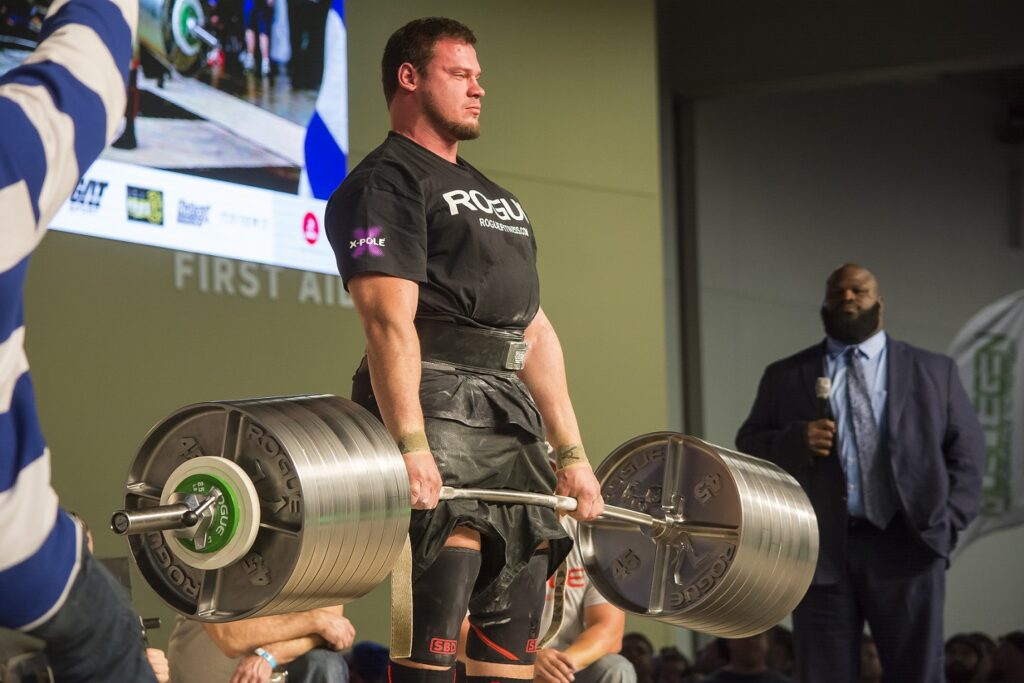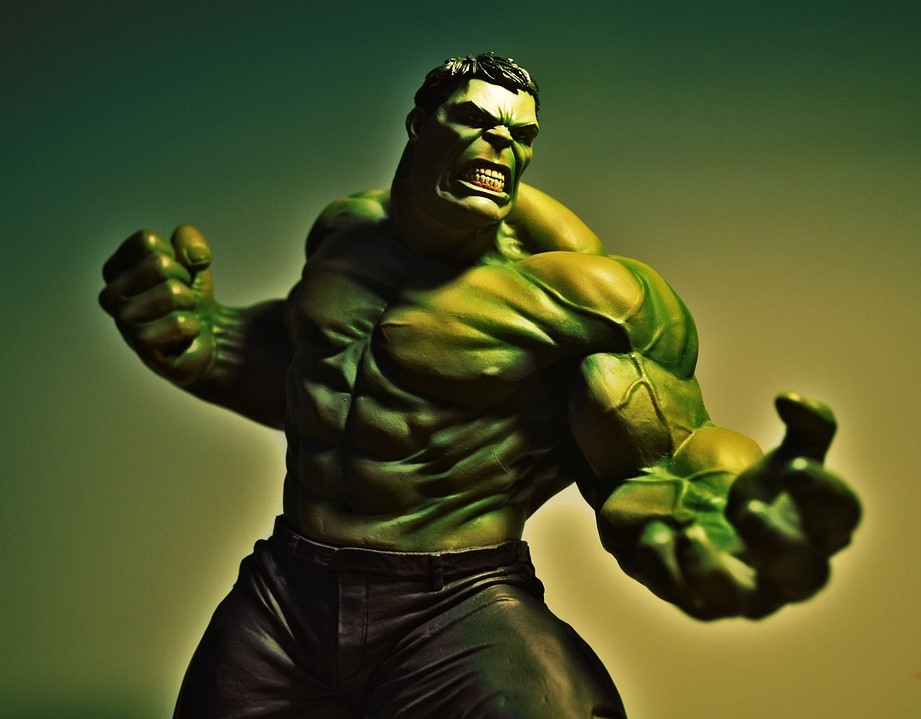Fernando Ribas
Hysterical strength is maybe not the best name. What if we called it superhero strength? And what if we all could all be superheroes, tapping into this usually hidden power? That said, you might consider yourself lucky you haven’t had to. In 2012, a 22-year-old woman, a lifeguard of ordinary size, hoisted a BMW off her father after the car had toppled from a jack, and she found him unresponsive. The car weighed over 4000 lbs.! She’s one of many to lift seemingly impossible-to-budge weights in life-or-death panics. Let’s examine hysterical strength, how our bodies are capable of superhuman feats, and what applications it may have for your workouts.
WHAT IS HYSTERICAL STRENGTH?
Hysterical strength is a term coined by psychologists to describe instances where individuals demonstrate an exceptional surge of strength beyond their normal capabilities during highly stressful or life-threatening situations. These occurrences have been reported anecdotally and often involve people lifting heavy objects or performing extraordinary physical tasks to ensure their survival or the well-being of others.

HYSTERICAL STRENGTH AND ADRENALINE
The surge of adrenaline, also known as epinephrine, is believed to play a pivotal role in hysterical strength. When confronted with a high-stress situation, the body’s fight-or-flight response is triggered, leading to the release of adrenaline into the bloodstream. Adrenaline is a hormone that prepares the body for immediate action, increasing the heart rate, blood flow to muscles, and mental alertness.
STUDIES OF OF HYSTERICAL STRENGTH
While the concept of hysterical strength is intriguing, its scientific understanding is limited and mostly based on anecdotal reports. The rarity of such events combined with the difficulty of recreating them in controlled environments makes it challenging to conduct rigorous scientific studies on the phenomenon. Furthermore, the physical risks associated with attempting to replicate such events are significant. Modern scientists just don’t go there.
However, one interesting but ethically challenged study occurred over 70 years ago. As ESPN recounted:
Designing experiments to study it in human beings in the lab would be difficult to achieve…without also violating the norms of modern scientific ethics. But those codes weren’t always in place. Consider 1961, in Chicago, where a visiting professor of physiology from the University of Tokyo named Michio Ikai teamed up with Arthur H. Steinhaus, an American physiologist and fitness expert with a Ph.D. from the University of Chicago, to run some experiments. They recruited a group of 25 people, hooked them up to a device to measure “maximal efforts to flex the forearm” by pulling on a cable, and asked their subjects to flex as hard as they could; then they walked behind their subjects and, without warning, fired a gun—a starter’s gun!—next to the subjects’ ears. Pow! They asked them to pull the device again. When scared, the subjects overall were 7.4% stronger.
That 7.4% may not sound like much compared to women lifting cars, but if your max deadlift was stuck for months at 500 lbs. and a fight-or-flight burst of adrenaline elevated it instantly to 537 lbs., you would know at least some of the power of hysterical strength.
STUDIES OF ADRENALINE AND PHYSICAL PERFORMANCE
Research has shown that adrenaline can enhance physical performance and temporarily override the body’s normal limitations. A study published in the Journal of Applied Physiology found that adrenaline increased muscle strength and power output in participants, suggesting a direct link between adrenaline release and improved physical performance. Another study published in the Journal of Neuroscience revealed that adrenaline can reduce the perception of pain, potentially enabling individuals to exert themselves beyond what they would normally consider possible.

HYSTERICAL STRENGTH: FAQS
CAN ADRENALINE ALONE EXPLAIN HYSTERICAL STRENGTH?
While adrenaline plays a significant role in the phenomenon of hysterical strength, it is likely not the sole factor. Other psychological and physiological factors, such as heightened focus, increased heart rate, and enhanced muscle activation, may also contribute. Further research is needed to fully understand the complex interplay of these factors.
CAN ANYONE TAP INTO THEIR HYSTERICAL STRENGTH?
Hysterical strength is not a capability that can be intentionally accessed or controlled. It typically occurs in rare and extreme situations of high stress or danger. The body’s fight-or-flight response triggers the release of adrenaline (and, likely, other enhancements), which can potentially unlock temporary bursts of extraordinary strength. However, it is important to note that not everyone will experience hysterical strength, and attempting to replicate it intentionally can be extremely dangerous.
WHAT ARE THE RISKS OF ATTEMPTING TO TAP INTO HYSTERICAL STRENGTH?
The surge of adrenaline can temporarily override pain perception, leading individuals to exert themselves beyond their normal capabilities. The body has natural limitations in terms of strength and endurance, and exceeding these can lead to serious injuries: muscle and tendon strains or tears, bone fractures, and even cardiovascular problems. It’s crucial to prioritize personal safety and exercise caution in high-stress situations rather than rely on the potential for hysterical strength.
ARE THERE TRAINING METHODS TO UNLEASH HYSTERICAL STRENGTH?
No, by its very nature hysterical strength, which is unpredictable and temporary, is triggered by a highly stressful event. Such events can’t be fully replicated. If anything, training for high-stress, unusual events would make those events seem less stressful and more usual. Of course, regular physical training can improve overall strength and fitness, which may boost physical performance in stressful situations.
ARE THERE SAFER WAYS TO TAP INTO HYSTERICAL STRENGTH BEFORE BIG LIFTS?
Yes, to a limited degree. And this goes back to the strength study with the fear-inducing starter gun. We don’t recommend that. But here are a few “tricks” that can boost adrenaline:
Get slapped. If it works for you, take a slap to the back or the face, before a big lift. This is a popular adrenaline-boosting, psych-up tactic for competitive powerlifters and weightlifters.
“Fight.” A personal burst of violent action, such as doing a flurry of air punches or head shakes, may also boost adrenaline and your your mental alertness.
Supplement. Caffeine increases the firing of neurons in the brain, alarming the pituitary gland so it produces adrenaline. Take 200 mg. pre-workout.
Stage an “event.” Have others watch you attempting big lifts and cheer you on. Studies have shown we’re stronger when we’re watched.
Speak. Pre-set and intra-set cursing has been shown to increase strength. Saying a mantra of either positivity or negativity (getting angry at the weight, for example) can also boost adrenaline.
Listen. Music has also been shown to increase strength. Crank up the up-tempo or especially inspiring (or hardcore) tunes in your Airpods or headphones.

ARE ORDINARY PEOPLE REALLY LIFTING CARS WITH HYSTERICAL STRENGTH?
Yes…but, well, they’re not actually deadlifting entire cars weighing thousands of pounds. Unless you’re Bruce Banner, there are limits to even superhuman strength.
The BBC explained:
Most reported hysterical strength examples describe a person lifting a portion of a vehicle several inches off the ground, and not an entire automobile. There’s the catch: three of the vehicle’s wheels—or maybe even all four, depending on the suspension—remain on the ground, distributing the total weight of the vehicle. Furthermore, a vehicle’s mass is not apportioned evenly; the heaviest part is the engine block, at the front-center, not at the periphery where the lifting is taking place. Put that all together—and not to take away from the courage of those who have put themselves at risk to save others—but someone in the standard hysterical strength scenario is probably lifting more on the order of several hundred pounds, not an Incredible Hulk-esque few thousand.
HYSTERICAL STRENGTH CONCLUSION
Hysterical strength continues to captivate our imaginations, showcasing the untapped potential of the human body under extreme stress. While the surge of adrenaline is believed to play a role in unlocking this hidden strength, more scientific research is needed to fully understand the mechanisms behind it. As of now, the concept of hysterical strength remains largely anecdotal, and caution should be exercised to avoid endangering oneself or others in the pursuit of extraordinary physical feats.
Sources:
Goldstein, D. S. (2010), “Adrenal responses to stress,” Cellular and Molecular Neurobiology, 30(8), 1433-1440.
Lane, R. D., & Ryan, L. (2014), “Modulating the emotional response: effects of gender and symptom severity on emotional muscle resonance.” International Journal of Psychophysiology, 94(2), 203-209.
Sijbesma, J. W., Vermeulen, M., & Heerschap, A. (2003), “Pharmacological MRI as a new technique to investigate the adrenaline-induced hyperglycemic response in humans.” Diabetes, 52(4), 1073-1077.
Tennant, F. (2009), “Pathophysiology of myofascial trigger points.” The Journal of the American Osteopathic Association, 109(6), 285-287.
















































